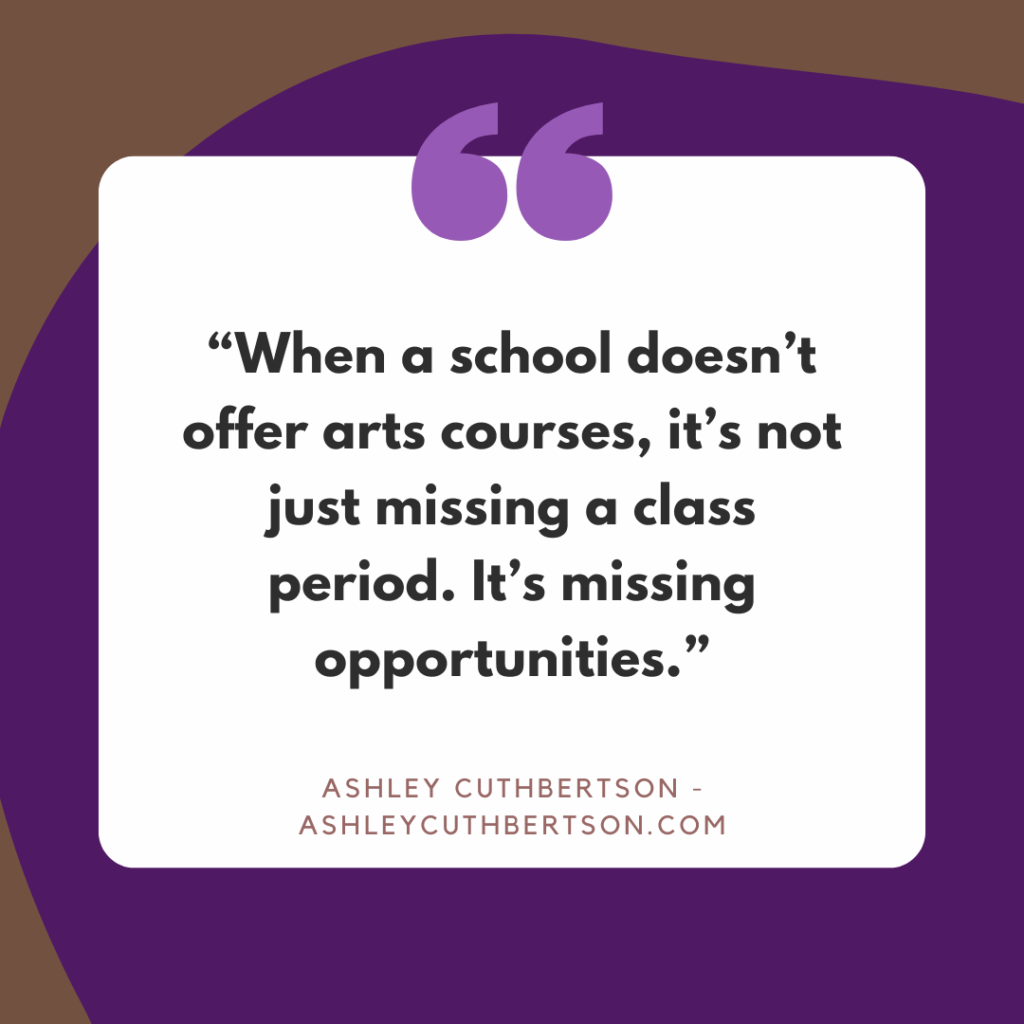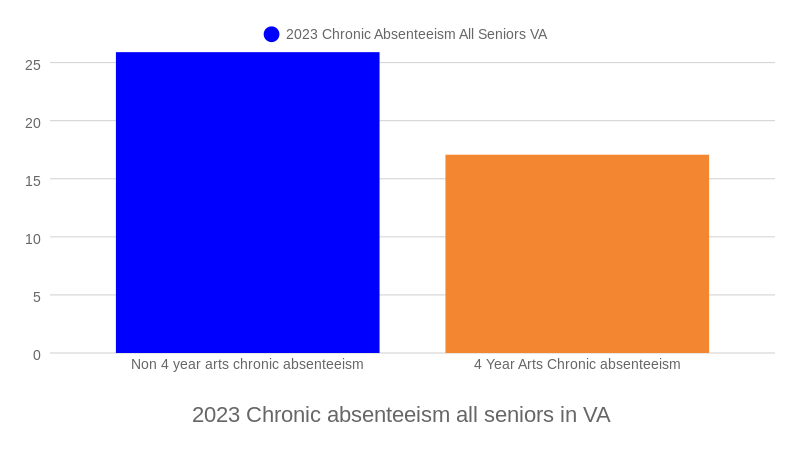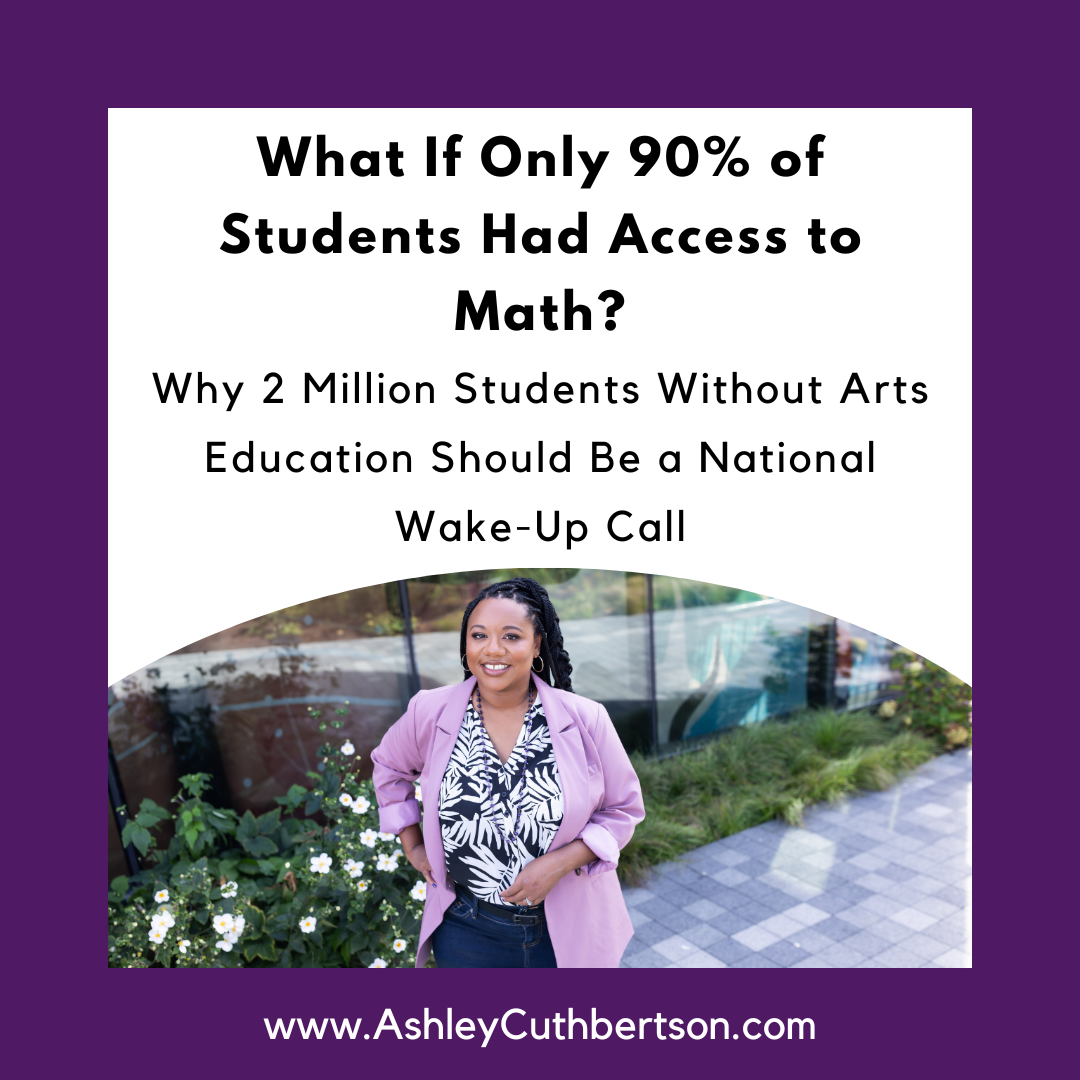Read time: 6 minutes
At last week’s NAfME Eastern Division conference in Hartford, Connecticut, one idea kept coming up over and over again. In sessions. In side conversations. In panel discussions.
Data matters.
It’s what moves decisions. It’s how budgets get made. It’s the language policymakers speak and if we want real change in arts education, we have to speak that language too.
One statistic I continue to come back to is from the Arts Education Data Project’s National Arts Education Status Report in 2019 which found that 2 million students don’t have access to any arts education. Meaning their schools don’t offer consistent arts courses. And within that, 3.6 million lack access to music education specifically—making music the most commonly missing discipline in schools in the U.S.
Sure, that means just over 90% of students do have access. And at first glance, that seems like a win—until you realize that if this were math or reading, we’d call it a crisis.
But let’s flip it.
If 10% of students in this country didn’t have access to math class, would we say that was good enough?
Would You Accept 90% in Math?
Imagine a school district proudly reporting that 90% of its students could take English courses.
Would anyone accept that?
Absolutely not.
We’d call it a crisis. We’d scramble to fix it. There would be press conferences, emergency funds, new policies.
But when it’s music—or any of the arts—we lower the bar. We tolerate a gap that would never fly in any other subject.
The arts are often seen as enrichment, not essential—and when budgets are tight, they’re usually the first to go. But the consequences of that mindset are long-lasting and inequitable.
And that gap? It’s not random. The 2 million students without arts education are more likely to be in urban or rural districts, communities of color, and lower socio-economic communities.
These are very same places where students already face barriers in nearly every other aspect of their education.
So when we say “most kids have access,” we have to ask: which kids don’t?
And what’s the cost of that?
The Consequences Are Bigger Than You Think
When a school doesn’t offer arts courses, it’s not just missing a class period. It’s missing opportunities.

Students lose the chance to:
- Build real-world skills like collaboration and communication
- Connect with their identity and community
- Stay engaged in school
- Discover talents that could shape their future
And in the broader picture, we’re missing one of our best tools for re-engaging students right now—especially in the wake of the pandemic and the effects we’re still experiencing.
Want to Fix Chronic Absenteeism? Start with the Arts.
Chronic absenteeism is a big issue in education right now, and the solution is right in front of us.
In Virginia, high school seniors who took arts courses all four years were between 32% and 51% less likely to be chronically absent than students who didn’t take any arts classes (VCFAE, 2024).

Think about that. In a moment when absenteeism is one of the biggest challenges facing schools, arts education is literally helping students show up.
And honestly? That makes sense.
For so many students, their music, art, dance, or theatre class is the one class where they feel like they belong. It’s where they’re excited to go and where they feel safe being themselves.
That’s not extra. That’s essential.
And yet, despite its proven impact, arts education continues to be sidelined in favor of ‘core subjects.’ But what if we stopped thinking in either/or terms—and recognized that the arts are not a distraction from literacy or math, but a driver of making learning relevant?
What Employers Are Really Looking For
Meanwhile, employers are sounding the alarm: new graduates aren’t ready.
But they’re not talking about a lack of algebra. They’re talking about the skills you can’t test for on a Scantron:
- Teamwork
- Adaptability
- Problem-solving
- Communication
According to a report from the National Association of Colleges and Employers, these are the top competencies employers want—and often don’t find—in job applicants (NACE, 2020).
You know where students learn these things?
Arts classes.
In ensembles, they learn to listen to others and work together. In rehearsals, they practice persistence. On stage, they develop confidence and communication under pressure.
The very skills we say we want in our future workforce are built—quietly, consistently—in arts classrooms every day.
The Arts Make Us Human
And beyond all of that—the grades, the jobs, the statistics—the arts offer something deeper.
They remind us how to be human.
The arts give students a way to express what they’re feeling. To tell their stories. To process the world around them. And to connect with something bigger than themselves.
When students engage in the arts, they learn empathy. Perspective. Presence. In a world full of endless distraction and where disconnection from those around us is rampant, that kind of learning is urgent.
So What Do We Do?
We stop treating arts education like a nice-to-have.
And we start treating it like what it really is: a building block for life.
That means:
- Ensuring every school has certified teachers for music, visual art, dance, and theater
- Supporting arts teachers with culturally responsive, relevant curriculum and materials
- Holding ourselves to the same standard of access as we’d expect for any core subject
Because a student’s zip code shouldn’t determine whether they get to sing, play, create, and grow.
“Good Enough” Isn’t Good Enough
If 90% of students had access to math, would you celebrate?
Would you enroll your child in a school that didn’t teach reading?
Of course not.
So why are we okay with 2 million students going without the arts?
Let’s stop pretending 90% is a win.
And instead, let’s start telling the full truth: we can do better. And our students—all of them—deserve nothing less.
So the next time you look at a school budget, a staffing chart, or a school improvement plan, ask: Where are the arts?
Because where the arts are missing, so is opportunity.
References
- Arts Education Data Project. (2019). National Arts Education Status Report Summary 2019. https://artseddata.org/national_report_2019/
- Virginia Coalition for Fine Arts Education. (2024). Chronic Absenteeism and the Arts in Virginia Public Schools. https://sites.google.com/view/virginia-coalition-for-fine-ar/home?authuser=0
- National Association of Colleges and Employers. (2020). Key Attributes Employers Are Looking for on Graduates’ Resumes. naceweb.org
